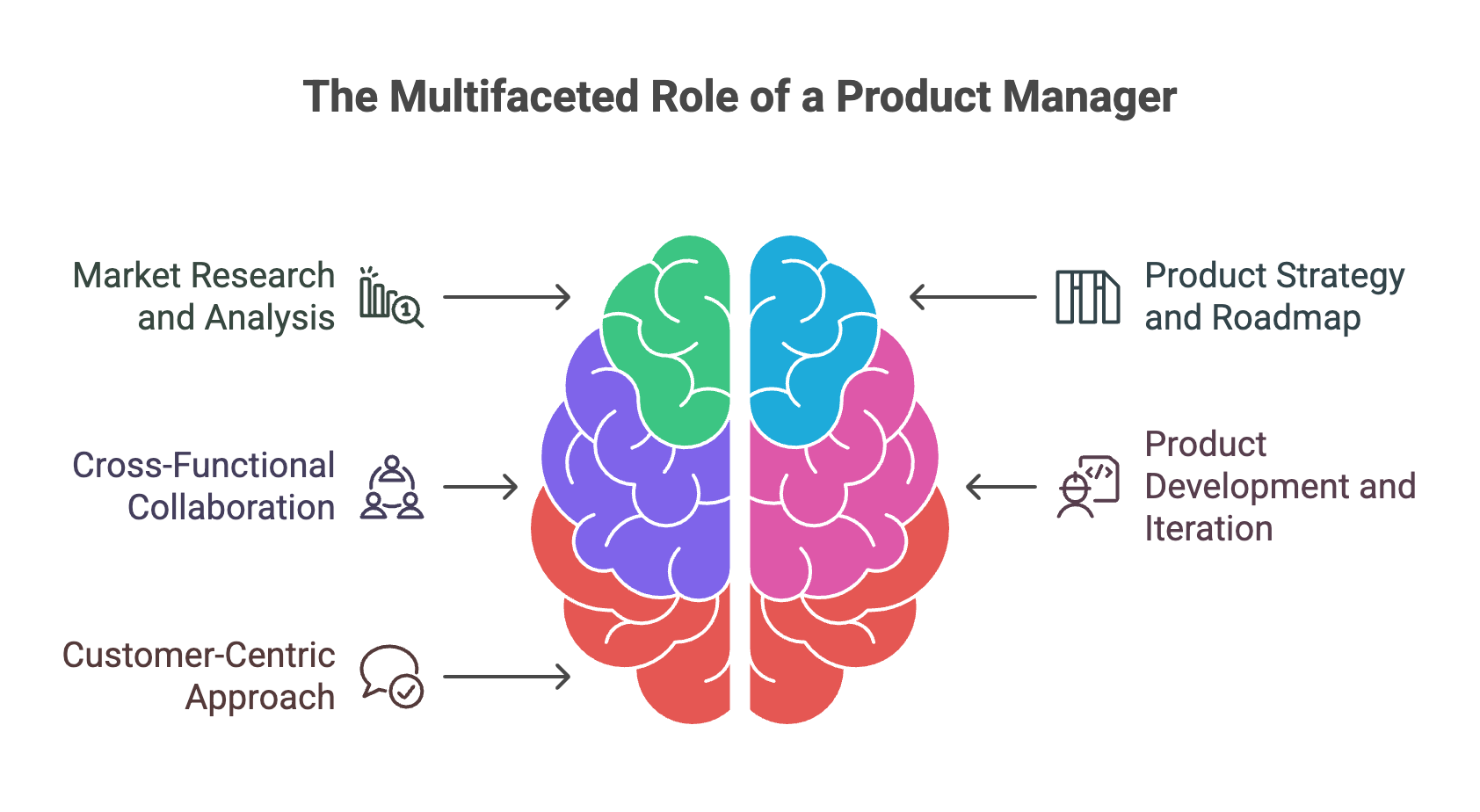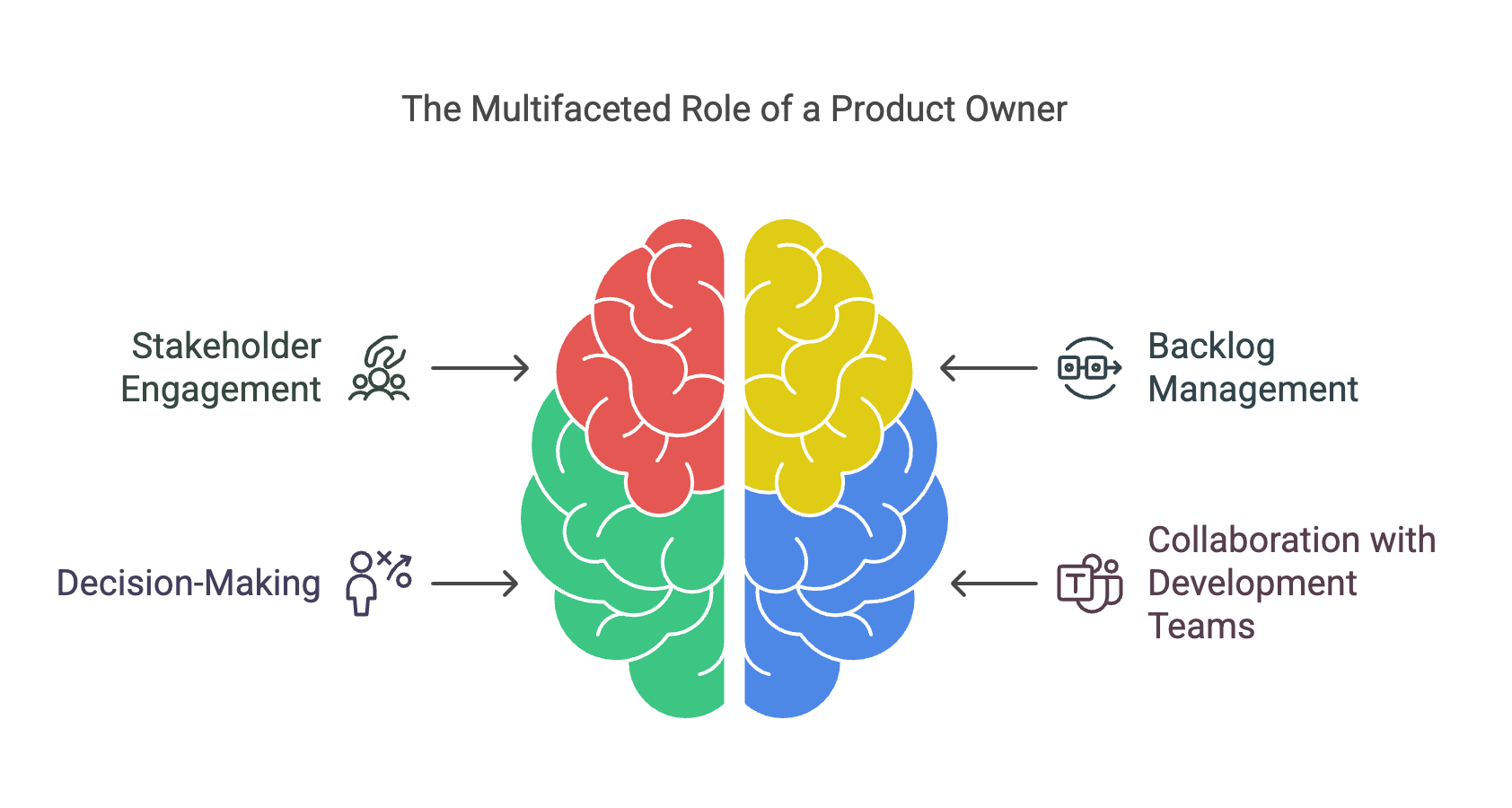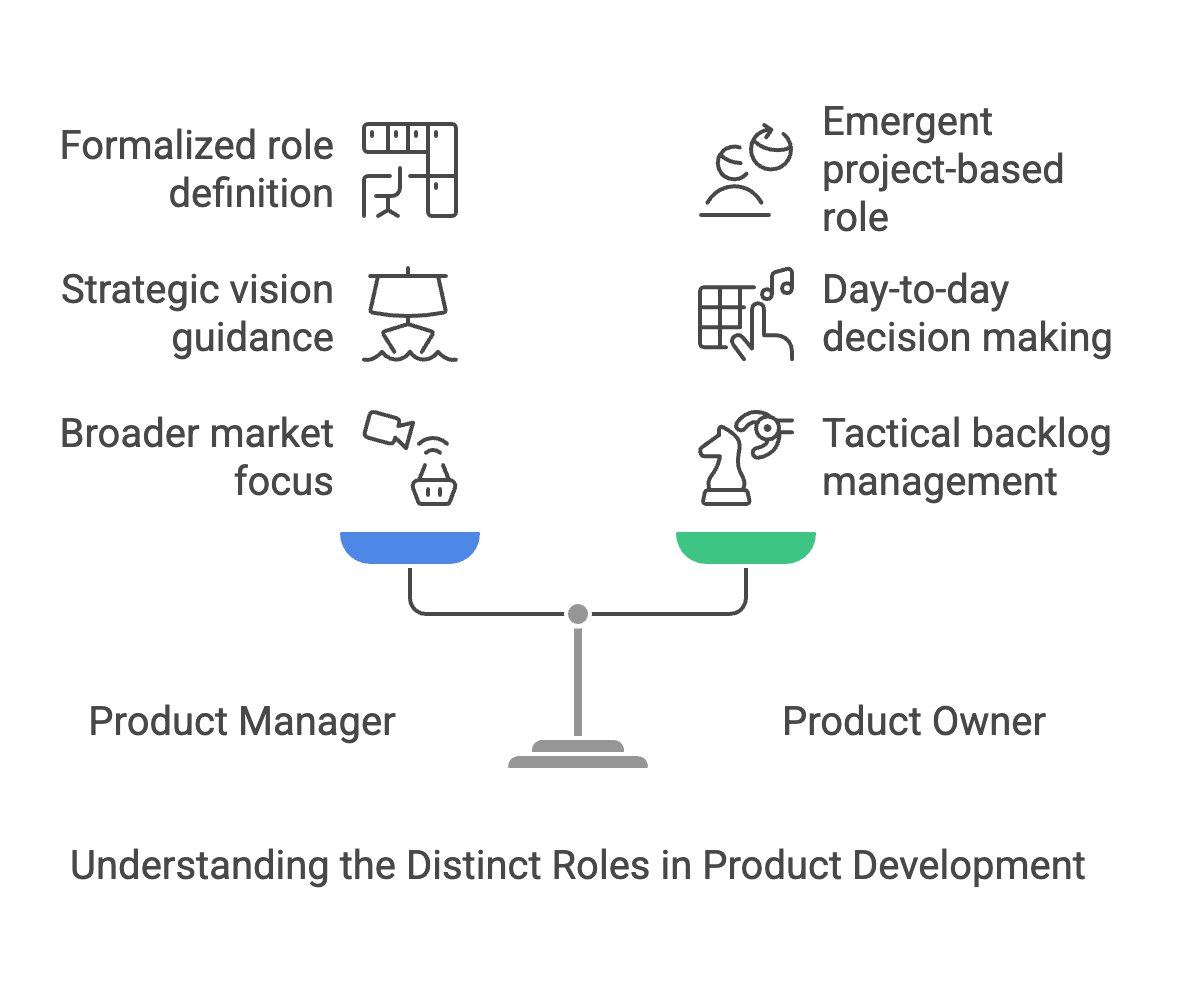The roles of a Product Manager (PM) and a Product Owner (PO) are crucial product development. While the Product Manager guides the product lifecycle, the Product Owner, though not always formal, ensures alignment with stakeholder needs. This article delves into the multifaceted responsibilities of both a Product Manager and a Product Owner, highlighting their distinct roles and contributions towards innovative and successful products.
Understanding the Product Manager Position
At its core, the Product Manager is a hierarchical position focused on understanding market needs, aligning business goals, and overseeing the product development process. The PM acts as a bridge between teams, stakeholders, and customers, ensuring the final product meets expectations and delivers value. Their position requires a unique blend of strategic vision, communication skills, and technical expertise. Here are some of the main responsibilities of a Product Manager:
1. Market Research and Analysis
A primary responsibility of a Product Manager is conducting thorough market research to identify trends, customer needs, and opportunities. Through market analysis, they gain valuable insights that inform product decisions, such as identifying target customers, defining product features, and setting pricing strategies. This research-driven approach is vital for creating products that resonate with the target audience.
2. Product Strategy and Roadmap
Product Managers craft a comprehensive product strategy that aligns with the company's overall vision and goals. They outline the product roadmap, serving as a strategic plan for product development, outlining milestones, timelines, and key deliverables. A well-defined roadmap helps keep the team focused and on track throughout the product's development lifecycle.
3. Cross-Functional Collaboration
Product Managers collaborate closely with various teams, including engineering, design, marketing, sales, and customer support. Effective communication and collaboration among these teams are critical for successful product development. The Product Manager acts as a liaison, ensuring all teams are aligned, and that the product's development progresses smoothly.
4. Product Development and Iteration
Throughout the product development process, Product Managers oversee the execution of the product roadmap. They work closely with the development team to prioritize features, manage resources, and address potential roadblocks. Iterative development and continuous improvement are central to the PM's approach, allowing them to adapt to changing market conditions and customer feedback.
5. Customer-Centric Approach
Customer feedback is invaluable for product improvement and validation. Product Managers actively seek customer input, analyze user data, and conduct usability tests to gain insights into user experiences and pain points. This customer-centric approach ensures the final product meets real-world needs and exceeds expectations.

Understanding the Role of a Product Owner
The Product Owner is not always a formal position; it’s more a role in the product development process, often emerging circumstantially. The Product Owner's primary focus is on representing the interests of stakeholders, customers, and end-users. They collaborate closely with the development team, serving as the voice of those who will ultimately use the product. Here are some of the main responsibilities of a Product Owner:
1. Stakeholder Engagement
The Product Owner actively engages with stakeholders to gather requirements, preferences, and feedback. They work to understand the needs of various parties, including customers, business executives, and end-users, and translate these requirements into actionable items for the development team.
2. Backlog Management
A key responsibility of the Product Owner is maintaining the product backlog—a prioritized list of features, tasks, and enhancements that need to be addressed in the product. They continuously assess and refine the backlog based on changing priorities, market conditions, and stakeholder feedback.
3. Decision-Making
Product Owners make critical decisions throughout the development process, including prioritizing features, defining user stories, and determining the order in which tasks are tackled. Their decisions are guided by a deep understanding of stakeholder needs and the overarching goals of the product.
4. Collaboration with Development Teams
The Product Owner collaborates closely with the development team, providing clarifications, answering questions, and ensuring the team's efforts align with the vision set forth by stakeholders. Their involvement helps maintain a clear direction for development and ensures the end product meets stakeholder expectations.

Key Differences Between Product Managers and Product Owners
While both Product Managers and Product Owners contribute to product development, their roles and responsibilities differ in several key ways:
Focus: Product Managers have a broader focus, encompassing market research, strategic planning, and cross-functional coordination. Product Owners, on the other hand, are more concentrated on stakeholder representation and backlog management.
Stakeholder Engagement: Product Managers engage with various teams and stakeholders to ensure alignment and successful product delivery. Product Owners prioritize engagement with stakeholders, acting as the link between them and the development team.
Strategic vs. Tactical: Product Managers operate at a strategic level, guiding the overall product vision and roadmap. Product Owners operate at a more tactical level, making day-to-day decisions to ensure the development process stays on track.
Formality: The role of Product Manager is well-defined and formalized. In contrast, the role of Product Owner can emerge circumstantially based on project needs and may not always be a formal title.

Key Takeaway
In the intricate landscape of product development, both Product Managers and Product Owners play integral parts in driving product success. While Product Managers focus on market research, strategy, and holistic coordination, Product Owners prioritize stakeholder engagement, backlog management, and tactical decision-making. Understanding the distinct responsibilities of these roles enables organizations to harness the strengths of both Product Managers and Product Owners, ultimately leading to the creation of innovative and successful products that meet the needs of stakeholders and end-users alike.